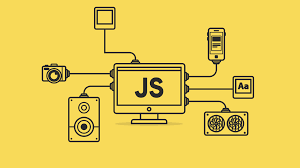info@gladsme.in
+91.8891968718
Mastering JavaScript: A Comprehensive Guide for Beginners
Mastering JavaScript: A Comprehensive Guide for Beginners

JavaScript is one of the most popular programming languages in the world, essential for web development. Whether you are a beginner starting your coding journey or an experienced developer looking to brush up on your skills, mastering JavaScript is a crucial step. In this comprehensive guide, we will cover the basics of JavaScript, its core concepts, and practical applications.
1. What is JavaScript?
JavaScript is a versatile, high-level programming language primarily used to create interactive effects within web browsers. It allows developers to implement complex features on web pages, such as dynamic content updates, interactive forms, animations, and more.
2. Setting Up Your Environment
Before you start coding, you need to set up your development environment. Here's how to get started:
Web Browser: Modern web browsers like Chrome, Firefox, and Edge come with built-in JavaScript engines.
Code Editor: Use a code editor like Visual Studio Code, Sublime Text, or Atom for writing your JavaScript code.
Console: Learn to use the browser's developer console to test and debug your code.
3. Basics of JavaScript Syntax
Understanding the syntax is the first step in learning any programming language. Here are some fundamental concepts:
Variables: Used to store data. Declared using var, let, or const.
javascript
Copy code
let name = "John";
const age = 30;
Data Types: JavaScript supports various data types including strings, numbers, booleans, arrays, and objects.
javascript
Copy code
let isStudent = true; // Boolean
let hobbies = ["reading", "gaming"]; // Array
let person = {name: "John", age: 30}; // Object
Functions: Blocks of code designed to perform a particular task.
javascript
Copy code
function greet() {
console.log("Hello, World!");
}
greet(); // Calls the function
4. Control Structures
Control structures help you manage the flow of your code:
Conditional Statements: if, else, and else if statements.
javascript
Copy code
if (age > 18) {
console.log("Adult");
} else {
console.log("Minor");
}
Loops: for, while, and do...while loops.
javascript
Copy code
for (let i = 0; i < 5; i++) {
console.log(i);
}
5. Working with the DOM
The Document Object Model (DOM) represents the structure of a web page. JavaScript can interact with the DOM to manipulate web content dynamically:
Selecting Elements: Use methods like getElementById, querySelector, and getElementsByClassName.
javascript
Copy code
let element = document.getElementById("myElement");
Modifying Content: Change the text or HTML content of elements.
javascript
Copy code
element.innerHTML = "New Content";
Event Handling: Add interactivity by handling events like clicks, mouseovers, etc.
javascript
Copy code
element.addEventListener("click", function() {
alert("Element clicked!");
});
6. Advanced Concepts
Once you grasp the basics, explore advanced topics to enhance your JavaScript skills:
Asynchronous JavaScript: Learn about callbacks, promises, and async/await to handle asynchronous operations.
ES6+ Features: Familiarize yourself with modern JavaScript features such as arrow functions, template literals, destructuring, and modules.
APIs and AJAX: Interact with external services using APIs and make asynchronous HTTP requests with AJAX.
JavaScript is a powerful tool in web development, offering a wide range of functionalities to create dynamic and interactive web applications. By mastering the basics and gradually delving into more advanced topics, you can become proficient in JavaScript and unlock new possibilities in your development projects.
Related Blogs

The Importance of Data Structures in Software Development
Read More...
Exploring Machine Learning Algorithms: A Beginner's Guide
Read More...
The Evolution of Programming Languages: From Assembly to Rust
Read More...
Understanding Big O Notation: A Guide for Developers
Read More...Subscribe for our Newsletter
Subscribe to elevate your software game! Stay updated on the latest trends, coding insights, and exclusive promotions with our newsletter.
